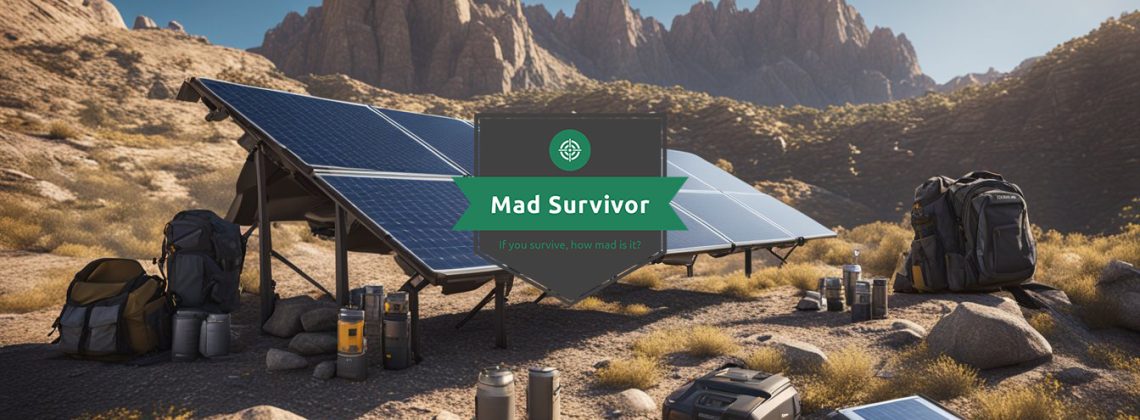
In survival situations, staying connected and powered up can make all the difference. You might find yourself where conventional energy sources are unavailable, and this is where solar powered battery chargers come into play. Easy to carry and environmentally friendly, these chargers harness the power of the sun to keep your devices running.
Solar powered battery chargers are not only practical for outdoor enthusiasts and adventurers but also crucial for emergency preparedness. A quality solar charger is lightweight, foldable, and, most importantly, reliable. Whether it’s your phone, GPS, or any other small electronic device, a solar power bank can replenish your batteries when you’re far from a wall outlet.
Selecting the right charger involves considering factors such as charging capacity, size, weight, and durability. You’ll want a charger that balances portability with power output efficiency, so you’re not left with a dead battery when you need it most. Ultimately, investing in a durable and efficient solar charger can ensure you’re better equipped for any unplanned situations that may come your way.
Jump To Section
- The Importance of Solar Power in Survival Situations
- Selecting the Right Solar-Powered Battery Charger
- Specific Features to Consider
- Top Picks for Solar-Powered Battery Chargers
- Usage Tips for Maximum Efficiency
- Incorporating Solar Chargers into Outdoor Adventures
- Survival Scenarios and Emergency Preparedness
- Innovations and the Future of Portable Solar Technology
- Conclusion
The Importance of Solar Power in Survival Situations
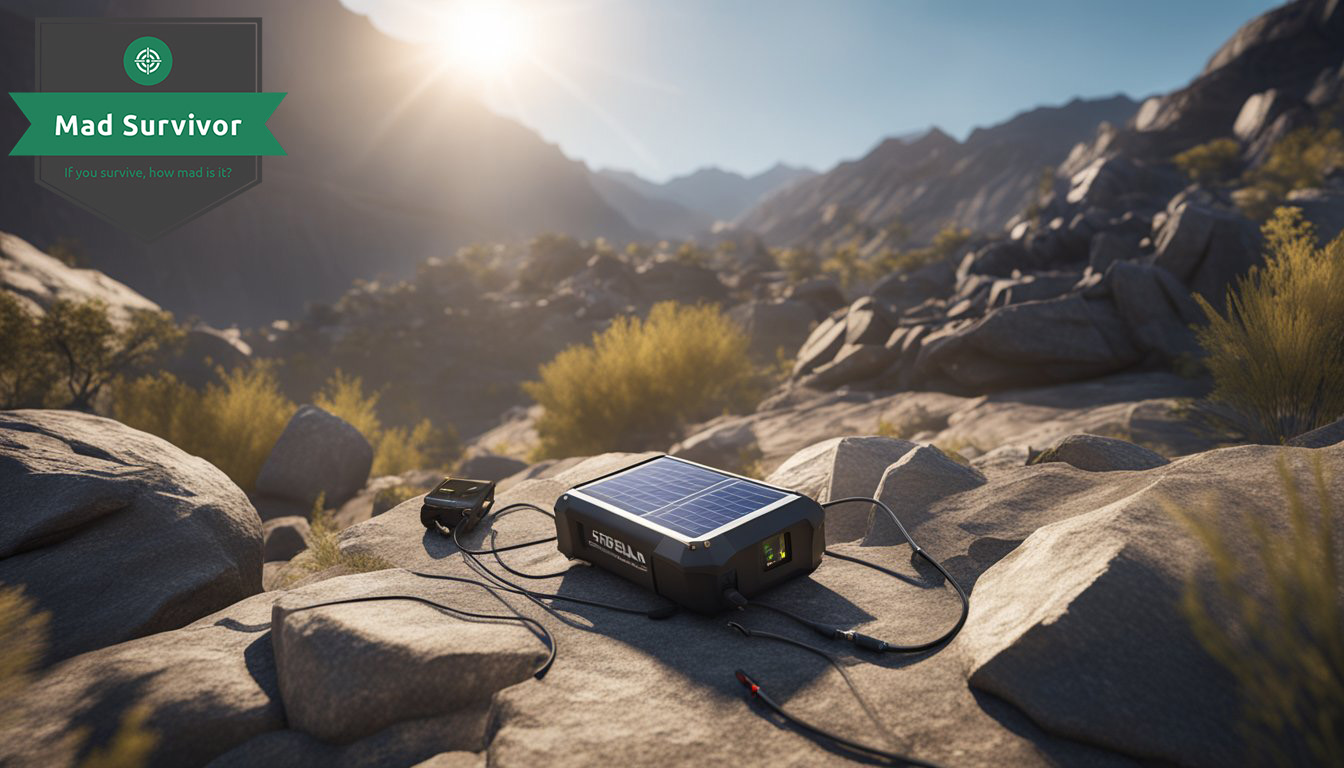
In survival situations, having a reliable power source can be a game-changer. Solar power offers a dependable and energy-efficient solution that ensures you have access to backup power when you need it most.
Understanding Solar Energy and Its Benefits
Solar energy, harnessed from the sun’s rays, is a clean and inexhaustible power source. When you’re cut off from traditional power grids, maybe due to a power outage or when you’re in a remote location, solar energy becomes your silent companion that doesn’t require fuel or complex maintenance. Here’s why it’s beneficial:
- Renewable: Solar energy is available as long as the sun is shining, providing you with a sustainable power supply.
- Energy Efficient: Solar panels convert sunlight into electricity with increasing efficiency, making the most out of every ray.
- Eco-Friendly: Using solar power reduces reliance on fossil fuels, lessening environmental impact.
Why Solar Chargers Are Essential for Survival
In an emergency, staying connected could mean the difference between safety and peril. Here’s how a solar power charger or solar power bank serves as an essential survival tool:
- Backup Power: It offers you a way to charge essential devices like phones, radios and GPS units.
- Portability: Most solar chargers are designed to be lightweight and foldable, making them easy to carry and store.
- Versatile Charging Options: They can come with multiple USB ports, allowing the charging of various devices simultaneously.
By incorporating solar-powered battery chargers into your survival gear, you equip yourself with a reliable, renewable source of power that’s both efficient and environmentally responsible.
Selecting the Right Solar-Powered Battery Charger

Choosing an ideal solar-powered battery charger for survival situations means considering how the technology will perform when you need it most. You’ll want to focus on the solar panel’s efficiency, the charger’s portability and durability, as well as its power output and charge speed to ensure it meets your needs in the field.
Evaluating Solar Panel Technology
The heart of any solar charger is its solar cells. Look for chargers equipped with monocrystalline or polycrystalline solar cells, which are typically more efficient; monocrystalline is often the best, due to its higher conversion efficiency. This means it converts more sunlight into electricity, offering quicker charge speeds. The trade-off is usually cost, as higher-efficiency panels might come with a steeper price tag.
Assessing Portability and Durability
Your solar charger must be easy to carry and rugged enough to withstand harsh conditions. Aim for a portable solar charger with a foldable design to save space in your pack. Durability is conveyed with features like water-resistant or shockproof cases and reinforced solar panels. Products like the X-Dragon typically blend portability with durability, featuring a soft-sided folding design that is practical for travel.
Importance of Power Output and Efficiency
Power output, measured in watts (W), will determine how quickly you can charge your devices. A panel with a higher wattage will typically charge a battery faster, assuming adequate sunlight. Efficiency is also crucial — it determines how well your charger will perform in less-than-ideal light conditions. May products offer multiple ports and sufficient capacity for charging several devices, a valuable feature when power sources are limited.
Specific Features to Consider
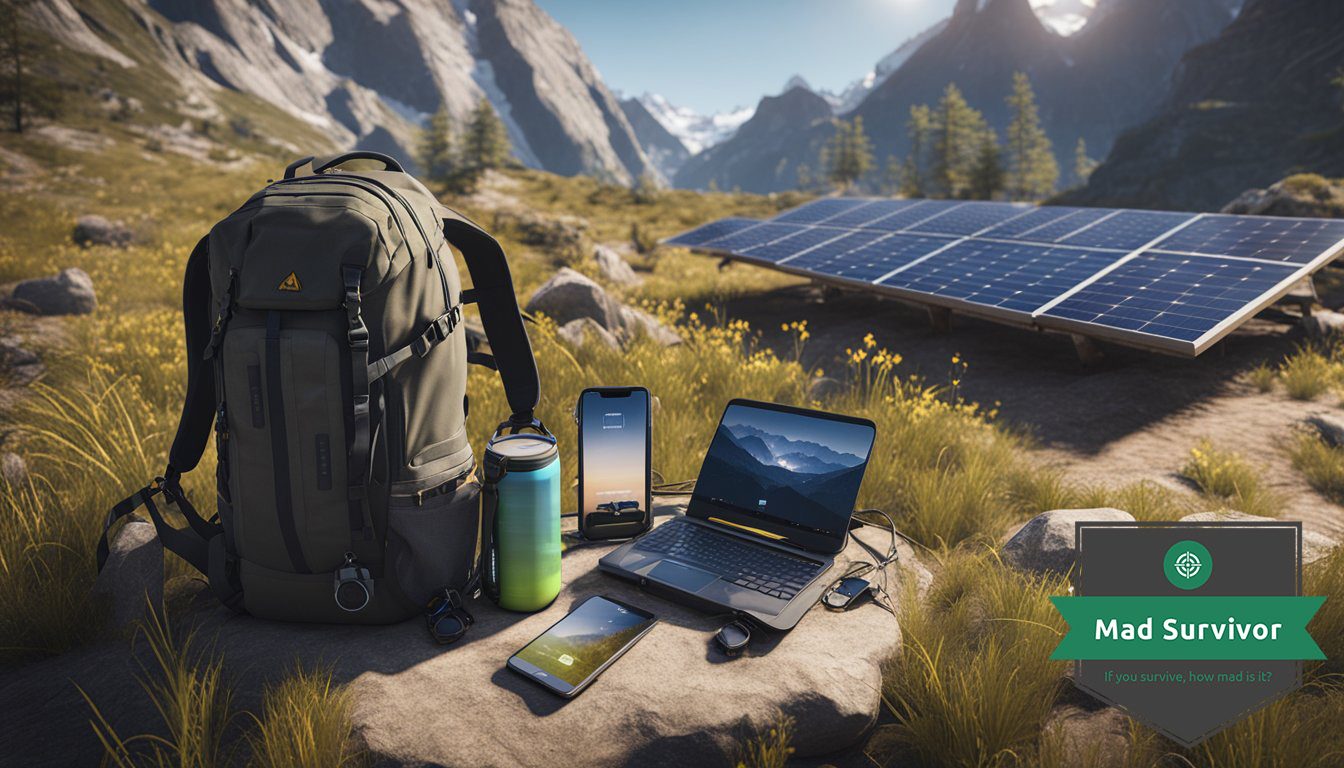
When preparing for survival situations, it’s essential to select a solar-powered battery charger that can withstand the elements and cater to your device’s charging needs. Here’s what you should pay attention to:
Water Resistance and Weatherproofing
A waterproof charger is your best bet for durability and reliability in outdoor settings. Choosing a solar charger that offers water resistance can be crucial, especially if you’re exposed to rainy conditions or near bodies of water. Some chargers are designed with a water-resistant layer, while others might be fully waterproof. Always check the IP rating to determine the level of protection against water and dust.
- IPX4: Offers protection from splashing water, no matter the direction
- IPX7: Can be submerged up to 1 meter in water for 30 minutes
- IPX8: Can withstand submersion beyond 1 meter – specifics will vary by manufacturer
Compatibility with Devices and Charging Ports
Your solar charger should have a variety of USB ports to connect with all your devices. Look for multiple charging options, such as USB-A and USB-C ports, to ensure compatibility. The inclusion of multiple ports allows you to charge several devices simultaneously.
- USB-A: Most common, compatible with many devices
- USB-C: Offers faster charging and is found on newer devices
Ensure the charger performs well under various lighting conditions, being effective in direct sunlight and on cloudy days due to a high conversion rate.
Built-In Batteries and Additional Functionalities
A built-in, rechargeable battery bank provides power storage, allowing you to charge your devices even when there’s no sunlight. Solar chargers with integrated batteries can be especially useful during the night or prolonged periods without sunlight. Look for additional functionalities such as integrated flashlights or emergency signals for added survival benefits.
- Storage capacity: Measured in mAh; the higher the number, the more charge it can hold
- Portable design: Collapsible panels or lightweight constructions improve transportability
Selecting a charger with the right combination of water resistance, device compatibility, and additional features can make all the difference in your outdoor adventures.
Top Picks for Solar-Powered Battery Chargers
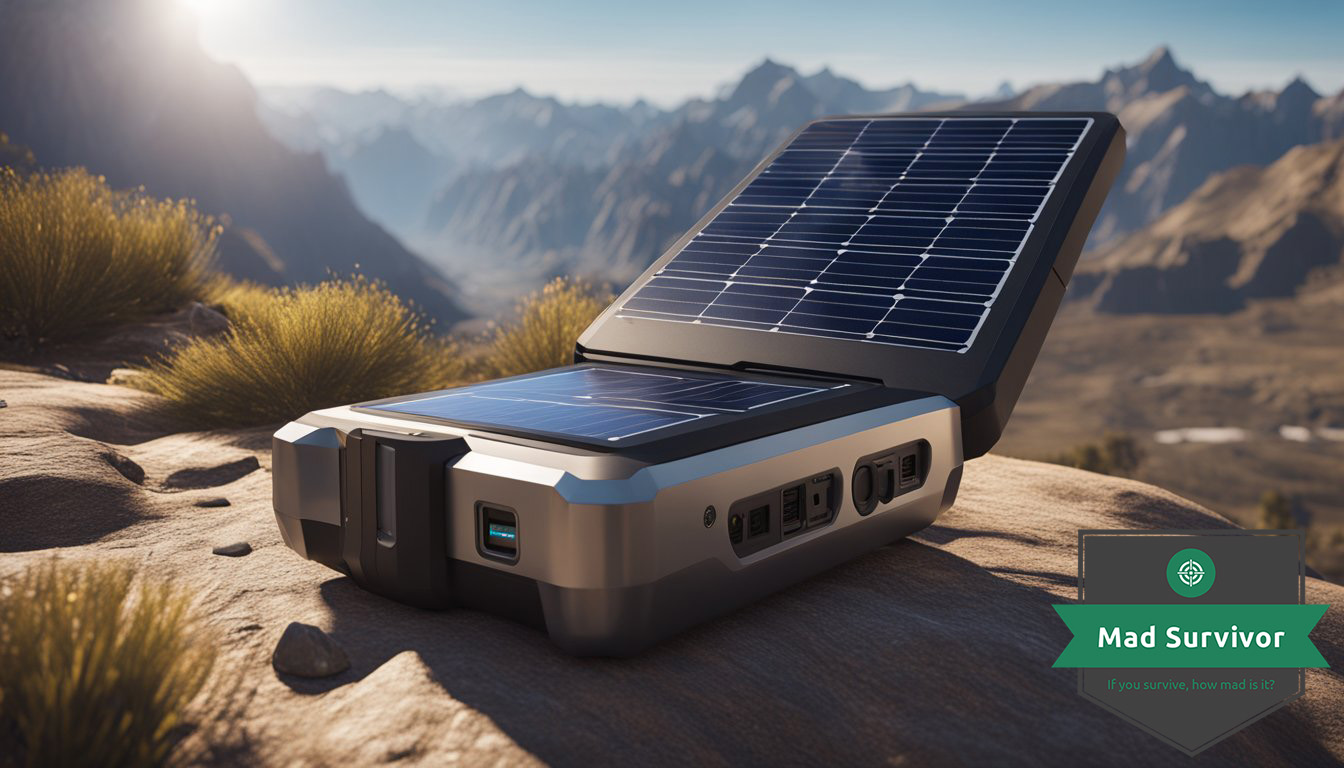
In survival situations, the right solar-powered battery charger can make a difference. Here are some of the best options tailored for reliability and performance.
Comparison of Popular Models for Survival Scenarios
When you’re assessing solar chargers for survival, consider attributes like weight, charging capacity, and durability. Here’s how some popular models stack up:
- Goal Zero Nomad 10: Ideal for its lightweight design, it’s perfect for charging devices like smartphones and headlamps.
- X-Dragon 20W: Offers a balance between portable design and charging efficiency even in overcast conditions.
- BigBlue 28W: Stands out for its higher energy output ideal for more power-hungry devices.
- BioLite SolarPanel 5+: Has the advantage of an onboard battery, useful for storing energy during the day (Only 5W, so charges slow).
- Jackery SolarSaga 100: While larger, it provides a much higher output, suitable for charging several devices or a portable power station.
Budget-Friendly and High-End Options
Your budget will largely influence your choice of a solar charger:
Affordable:
- Goal Zero Nomad 5: It’s an economical yet dependable option for minimal charging needs.
- BioLite SolarPanel 5+: Strikes a balance between affordability and the added utility of an integrated battery.
Value:
- X-Dragon 20W: This charger is an excellent middle ground, providing good performance without breaking the bank.
High-End:
- BigBlue 28W: Combines robust performance with durable build quality.
- Jackery SolarSaga 100: A premium choice for extensive charging capability and efficiency.
Remember to align your choice with your energy needs and the specifics of your survival situation.
Usage Tips for Maximum Efficiency
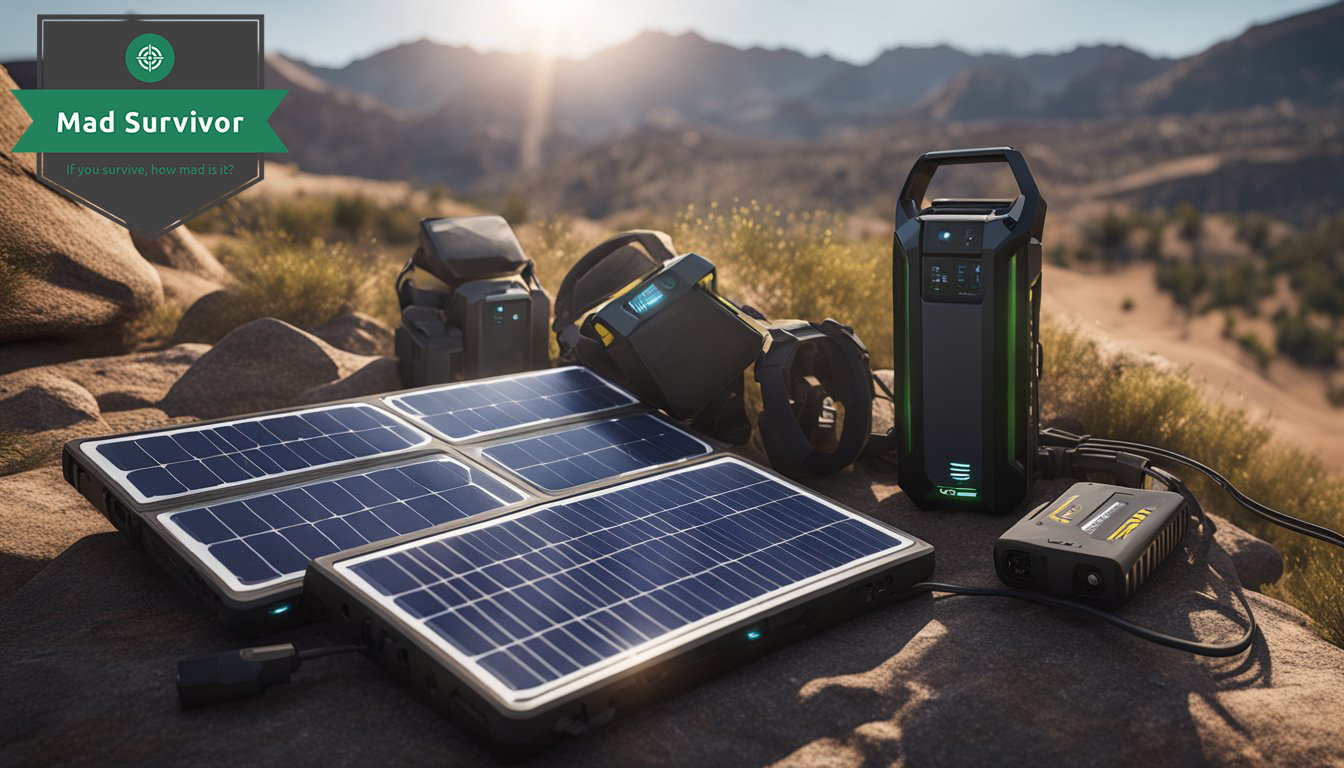
For your solar-powered battery charger to work at its best during survival situations, it’s essential to understand how to position it for maximum sunlight exposure and to maintain it to ensure its longevity.
Positioning for Optimal Sunlight Exposure
To maximize the efficiency of your solar charger, aim for direct sunlight placement. This can significantly increase the energy you harvest. When you’re camping or hiking, follow these specific tips:
- Track the Sun: Set up your charger to face the direction where the sun will be at its peak. The angle can make a huge difference in energy collection.
- Avoid Shadows: Even partial shade can reduce the efficiency of your charger. Keep it clear of shadows cast by trees, tents, or other structures.
- Use Clear Weather to Your Advantage: On clear days, position your lightweight and foldable panels early to benefit from the full sun cycle.
- Adapt to Cloudy Conditions: If the weather is overcast, extend your charging hours to compensate for the reduced light intensity.
Maintenance and Care for Longevity
Taking care of your portable solar charger is just as important as proper positioning. Here’s how to keep it in top condition:
- Clean Regularly: Wipe the panels with a soft, damp cloth to remove dust and dirt that can block sunlight.
- Inspect for Damage: Before and after your backpacking or camping trip, check for any signs of wear or damage.
- Store Safely: When not in use, store your compact charger in a dry place away from direct sunlight to prevent overheating or battery degradation.
- Follow Manufacturer’s Instructions: Adhere to the specific care guidelines provided by the manufacturer to ensure the best performance and longevity of your device.
Incorporating Solar Chargers into Outdoor Adventures
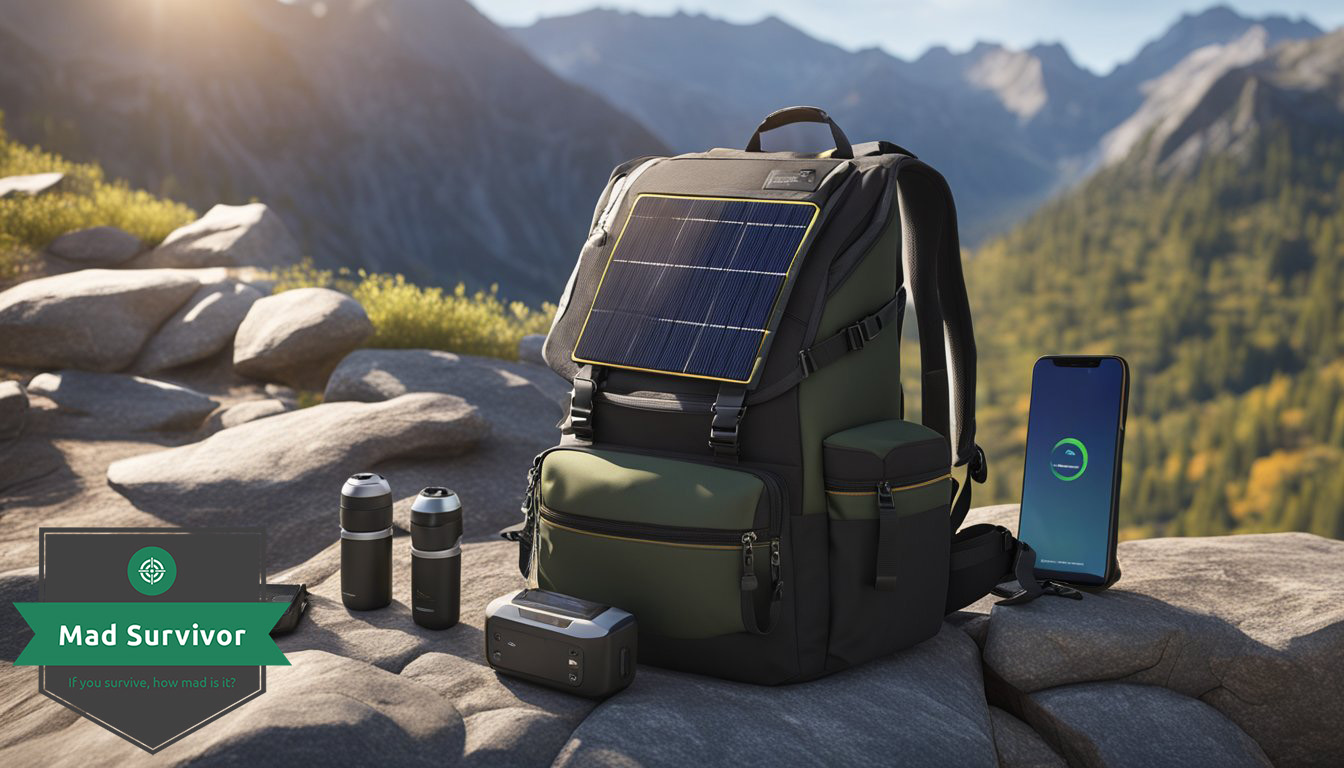
Using solar chargers can be a game-changer for your power needs when you’re miles away from the closest outlet. They provide a sustainable way to keep your devices charged, ensuring you’re always connected and safe during your outdoor activities.
Camping Trips and Backcountry Expeditions
When you’re on a camping trip or deep in the backcountry, power sources are scarce. A solar charger is your eco-friendly ally, silently converting sunlight to electricity to power your gear. Here’s what to consider:
- Capacity: Opt for a solar charger with a high milliampere-hour (mAh) rating to ensure your devices can be charged multiple times.
- Durability: Look for solar chargers that are waterproof and dustproof to withstand nature’s elements. An IP66 rating or higher is ideal.
- Size and Weight: Your charger should be lightweight and compact, making it easy to pack without adding much bulk.
For extended stays, consider solar chargers with integrated battery banks, like the BioLite Solar Panel 5+. It’s a dual-purpose tool that not only harvests sunlight but also stores energy for later use. Buying a solar charger together with a separate power bank device is also an option.
Backpacking and Hiking Essentials
As a backpacker or hiker, your gear’s weight is crucial. Every ounce matters, so you need a solar charger that strikes the right balance between functionality and portability. Here’s a quick checklist:
- Lightweight Design: Aim for chargers that weigh around 14-ounces or less to keep your backpack manageable.
- Charging Speed: Time is precious, so a solar charger with a fast charging capability is essential.
- Efficiency: Solar panels with high energy conversion rates will make the most of the available sunlight.
Chargers like the Goal Zero Nomad 20 are designed with hikers in mind, offering efficient power for small tech without unnecessary weight. Simply attach it to your backpack, and let the sun take care of the rest, providing you with a consistent energy source that’s crucial, especially in emergency situations.
Survival Scenarios and Emergency Preparedness
In survival scenarios, whether unexpected or foreseen, being equipped with the right tools can mean the difference between hardship and manageable inconvenience. A solar-powered battery charger should be a staple in your emergency gear, as it can be the lifeline for your smartphones and GPS devices during power outages and natural disasters.
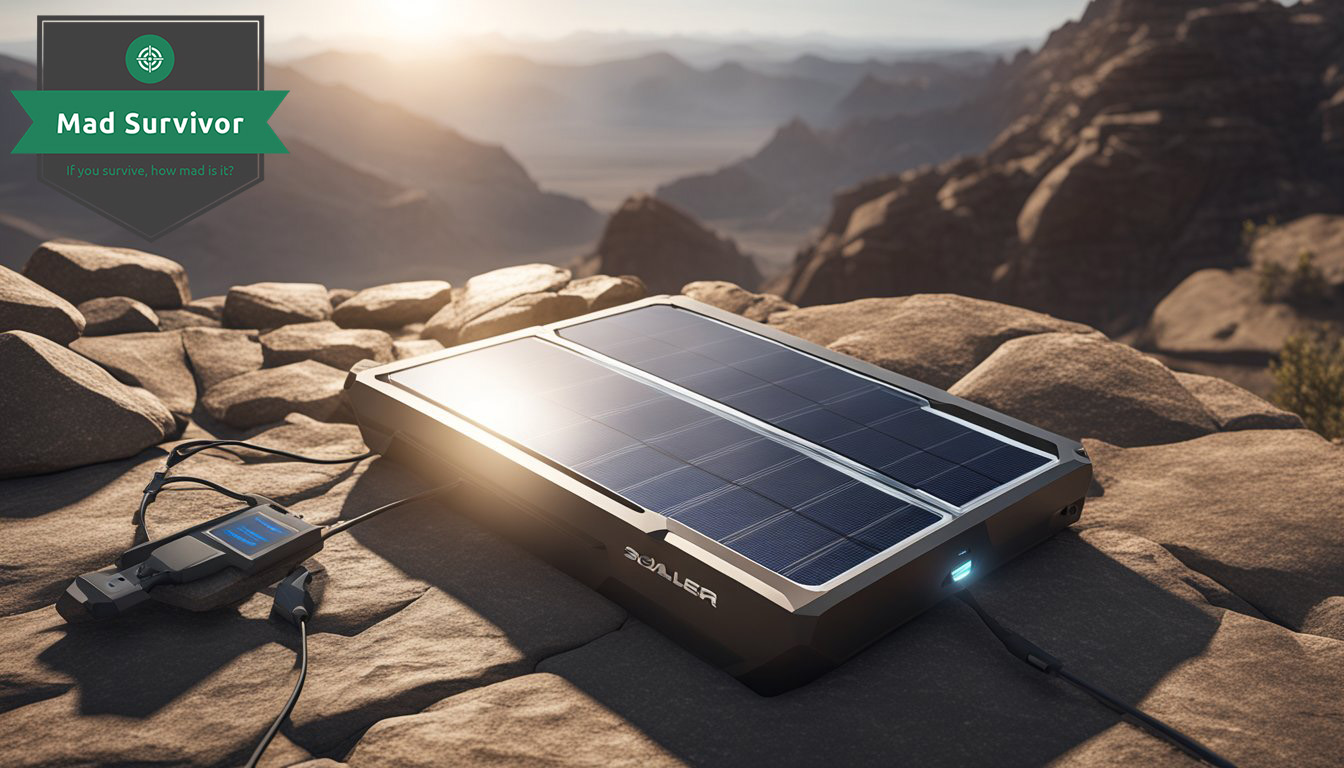
Building a Survival Kit with a Solar Charger
When assembling your survival kit, a good solar charger is a must-have. You want a charger that’s lightweight and durable, with a high conversion rate to make the most of the sun’s power. Your charger should ideally be foldable for easy packing and storage. Here’s a checklist for selecting a solar charger for your survival kit:
- Charger weight: Ideally less than 1 pound for ease of mobility.
- Conversion efficiency: Look for chargers with a high efficiency to get more power from less sunlight.
- Battery capacity: Large enough to charge your essential devices multiple times.
- Output options: Multiple USB ports for smartphones and a DC outlet may be necessary for your GPS device.
Being Prepared for Power Outages and Natural Disasters
In the event of a power outage or a natural disaster, having a solar-powered charger can keep you connected and informed. Look for a model that can charge a variety of devices—this versatility will be invaluable in an emergency.
Remember, the best emergency kit is the one that’s tailored to your specific needs. Consider these factors when choosing a solar charger for power outages or natural disasters:
- Ample output capacity: Enough to charge your key devices at the same time.
- Multiple charging outputs: So you can charge more than one device at a time.
- Durability: Should be rugged enough to withstand rough weather conditions.
- Ease of use: In an emergency, you don’t want complicated gadgets.
Always test your solar charger and other emergency equipment before you actually need it, to ensure everything works as expected. Keep your chargers and devices in an accessible place, so you’re ready to go when the unexpected happens. Stay charged and stay safe!
Innovations and the Future of Portable Solar Technology

Solar technology has seen significant advancements recently, directly impacting how you can stay powered up in survival situations. Let’s examine the efficiency improvements and the trending designs that are shaping the next generation of portable solar battery chargers.
Advancements in Solar Charger Efficiency
Technological progress has enabled portable solar battery chargers to become more efficient and reliable. For instance, newer solar power stations have integrated high-conversion-rate photovoltaic cells that ensure more sunlight is converted into usable power, maximizing charging capabilities even in less-than-ideal weather conditions.
- High-Efficiency Cells: Using cutting-edge materials like monocrystalline silicon, which enhances sunlight absorption.
- Compact Design: Recent models have become increasingly portable, folding down to minimal sizes without sacrificing power output.
Emerging Trends in Portable Power Solutions
The future of portable solar technology isn’t just about power—it’s also about how that power is stored and used. Portable power stations now boast higher-capacity batteries, capable of storing more energy for extended periods, ensuring that you have access to electricity when it’s needed most.
- Integrated Storage: Combining solar charging with high-capacity batteries for seamless power retention.
- Multipurpose Functionality: Modern devices often include features like wireless charging pads, multi-port options, and built-in LED lights to cater to a variety of needs.
New solar power chargers are being designed with rugged durability, making them ideal for survival scenarios where tough conditions may occur. With robust cases and weather-resistant qualities, you can count on these devices to perform when you need them most.
Conclusion
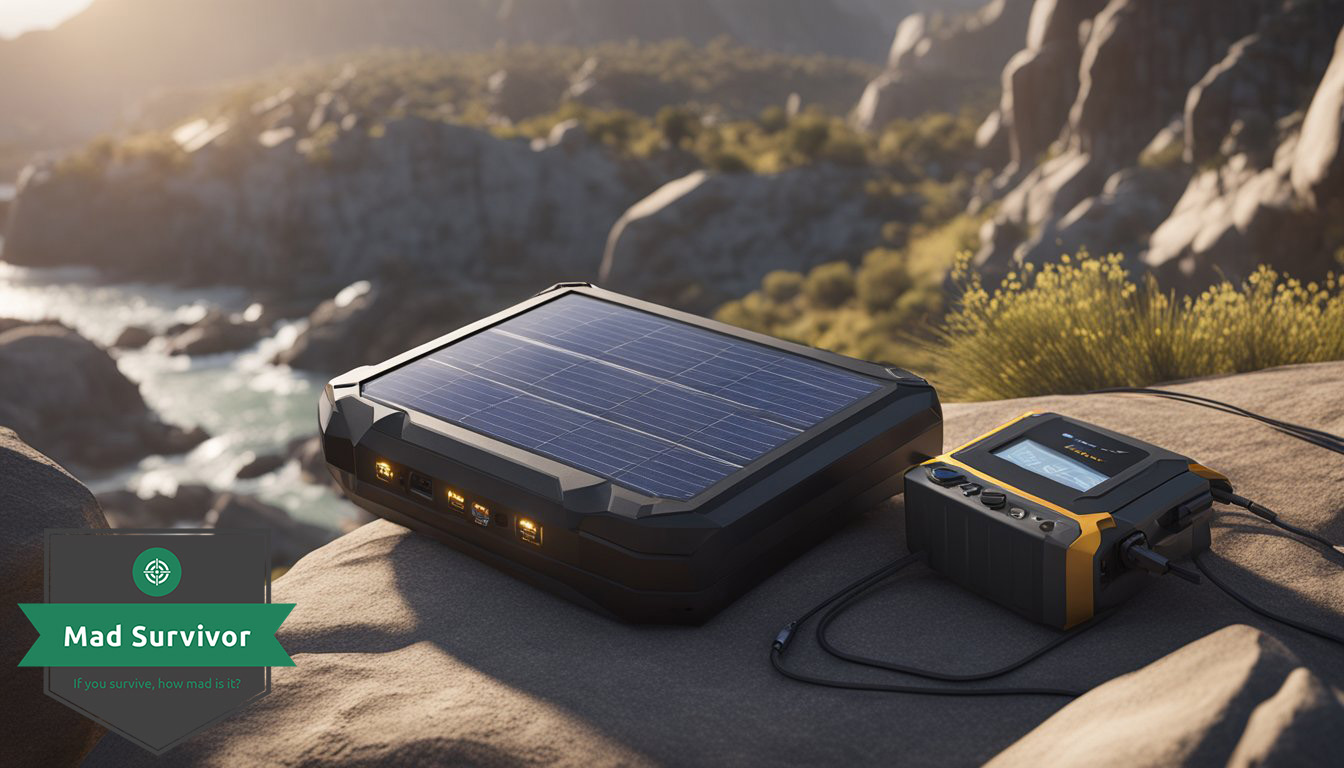
In choosing the portable solar battery charger that’s right for your survival needs, a close look at performance and practicality is essential. These devices harness solar energy, a renewable power source, directly from the sun, offering an eco-friendly solution to keep your gadgets charged.
- Lightweight and Compact: Portability is key in survival scenarios, and most solar chargers are designed to be easily packed.
- Sustainable Power: Utilize the endless energy from the sun to maintain communication and navigate with GPS—without the need for fuel or electricity grids.
- Versatility: Opt for chargers with multiple USB ports to charge several devices at once.
When selecting your solar charger, consider its power output and capacity to ensure it meets your energy needs. Remember, the efficiency of solar conversion and the presence of integrated batteries for energy storage can make a significant difference in usability.
Lastly, while you’re likely to encounter many options, focus on finding a durable charger that you can rely on. In a survival situation, the robustness of your gear is as crucial as its functionality. Your choice to use renewable energy solutions not only prepares you for the unexpected but also contributes to a more sustainable future.

Leave a Reply